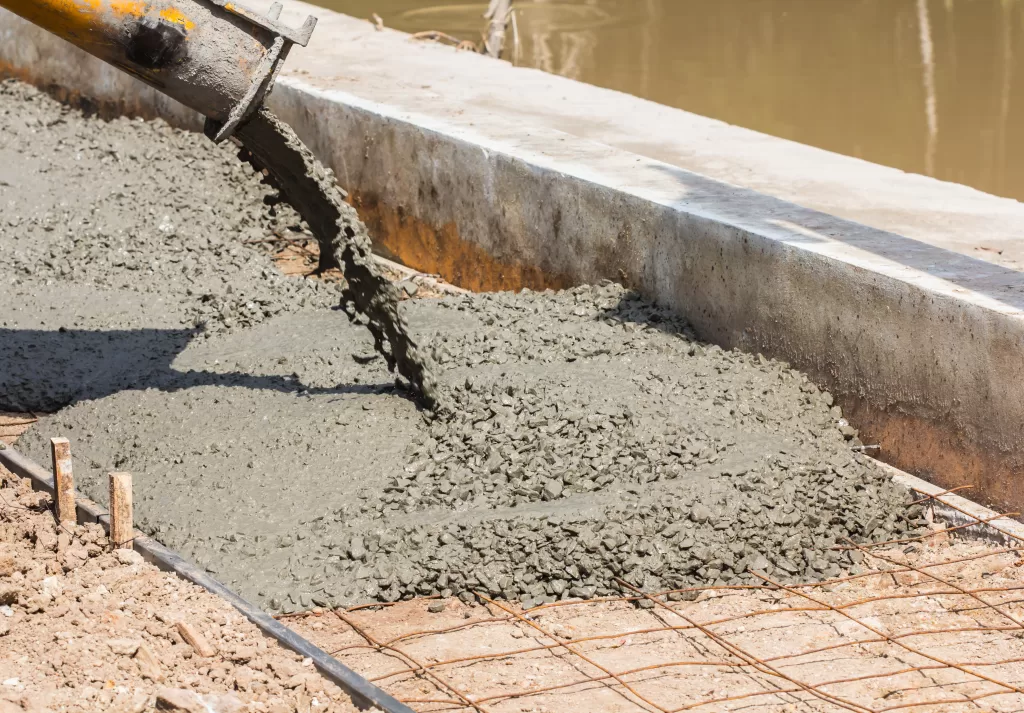Learning about construction materials is vital for ensuring the structural integrity of various projects. M40 grade concrete mix is one such material. It stands out as a top choice among engineers and contractors for its remarkable strength and resilience. However, achieving the perfect blend of components for M40-grade concrete demands a thorough grasp of concrete mix ratios. Whether you’re a seasoned contractor or a DIY enthusiast, this article is intended to offer you valuable insight into the M40 mix ratio.
What is the M40 Concrete Mix Ratio?
The M40 concrete mix ratio defines the precise proportions of ingredients required to create a high-strength concrete blend with a target compressive strength of 40 megapascals (MPa). The compressive strength of concrete is its ability to withstand load without deflecting. The M40 grade of concrete is extensively used in the construction of heavy-duty structures, like high-rise buildings, bridges, and industrial pavements, where exceptional strength and durability are paramount.
Here are the key points to understand about M40 Concrete Mix:
Ingredients:
The typical components of the M40 concrete mix include cement, fine aggregates (such as sand), coarse aggregates (like gravel or crushed stone), and water.
Proportions:
The exact mix ratio varies based on factors like local materials availability, environmental conditions, and project specifications. For example, a common mix ratio for M40 concrete is 1 part cement, 1.5 parts sand, 3 parts coarse aggregates, and water as needed for consistency.
Role of Ingredients:
Each ingredient plays a vital role in the concrete mix. Cement acts as the binding agent, fine aggregates provide workability and contribute to surface finish, and coarse aggregates improve strength and load-bearing capacity.
Water-Cement Ratio:
The water-cement ratio is critical, influencing the hydration process and ultimately affecting the concrete’s strength and durability. A lower water-cement ratio generally results in higher strength and durability but may reduce workability.
Mixing and Placement:
Once mixed, the M40 concrete blend is placed into moulds or formwork and allowed to cure and harden over time. Proper curing is essential for optimising strength and durability by allowing uninterrupted hydration.
Proportions of Each Component in the M40 Concrete Mix
In the M40 concrete mix, the proportions of each component play a crucial role in determining the final strength, durability, and workability of the concrete. Here’s a breakdown of the typical proportions:
Cement:
Cement serves as the binding agent in concrete, responsible for holding the mixture together. In the M40 mix, cement usually constitutes about 1 part of the total mix by volume or weight.
Fine Aggregates (Sand):
Fine aggregates, such as sand, fill the voids between coarse aggregates and cement particles. They improve workability and contribute to the density and smoothness of the concrete surface. In the M40 mix, fine aggregates usually make up around 1.5 parts of the total mix.
Coarse Aggregates (Gravel or Crushed Stone):
Coarse aggregates provide bulk and strength to the concrete mix. They distribute loads evenly and improve resistance to cracking and deformation. In the M40 mix, coarse aggregates generally comprise about 3 parts of the total mix.
Water:
Water is essential for the hydration of cement, forming a paste that binds the aggregates together. The water-cement ratio is carefully controlled to achieve the desired consistency, workability, and strength in the concrete mix.
Importance of Understanding Concrete Mix Ratios
Understanding concrete mix ratios is crucial in construction for several reasons. Here’s a list:
- Proper mix ratios determine the concrete’s compressive strength and durability.
- Correct ratios minimise material wastage. They reduce costs and environmental impact.
- Understanding mix ratios allows customisation to meet specific project needs, such as load-bearing capacity and environmental conditions.
- Knowledge of mix ratios facilitates quality control. It ensures consistency and reliability in construction.
- In case of issues like low strength or excessive cracking, understanding mix ratios aids in diagnosing and rectifying problems
- Properly mixed concrete provides a safe and stable foundation for buildings, roads, bridges, and other infrastructure.
- Compliance with mix ratio guidelines ensures adherence to industry standards and regulatory requirements.
Take your construction projects up a notch with the assurance of JK Cement. Choose from a host of house construction cement and more for improved durability and strength in each build.
FAQs
What is the use of M40 grade concrete?
M40 grade concrete is used in construction projects requiring high strength and durability, such as high-rise buildings, bridges, heavy-duty pavements, and industrial structures subjected to heavy loads and harsh environmental conditions.
How long does M40 grade concrete take to cure?
M40 concrete achieves its target strength after approximately 28 days of curing, although significant strength gain may occur within the first few days.
What quality control measures are important for M40 grade concrete?
Quality control measures include proper mix design, testing of materials, adherence to construction specifications, and careful monitoring of mixing, placing, and curing processes.
What does M40 represent in M40 concrete mix ratio?
The M40 in M40 concrete mix ratio represents the compressive strength of the concrete mix. For M40 concrete mix, the compressive strength is 40 Megapascals.














